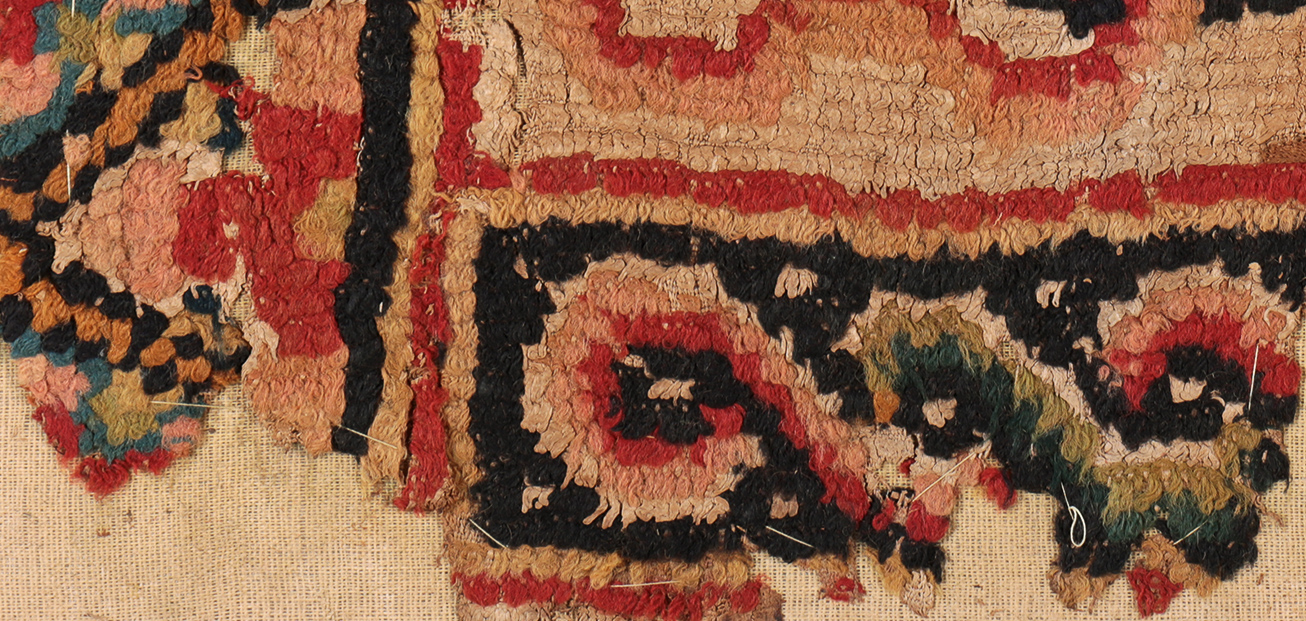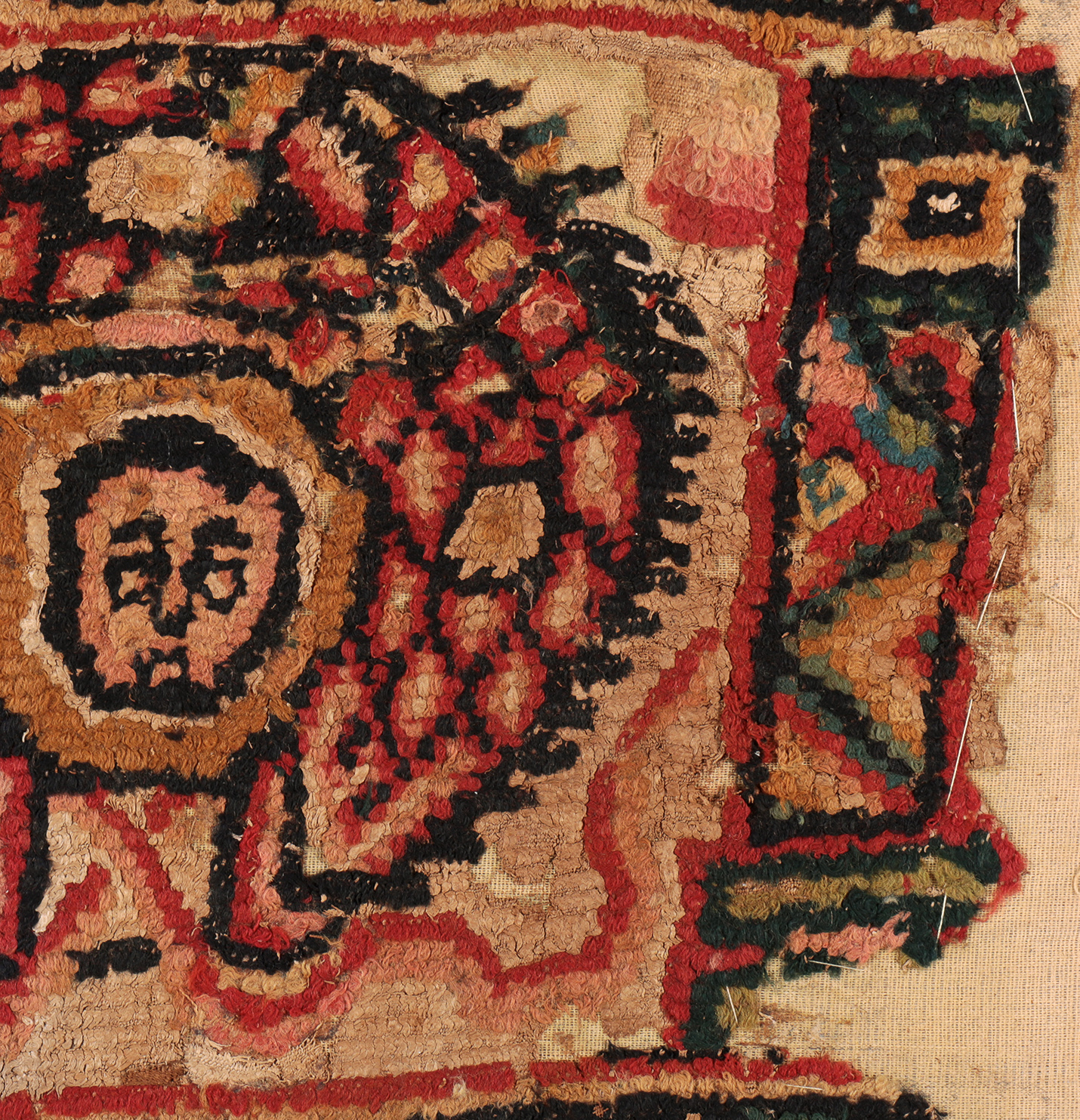A head framed in flowers with two interlaced ribbons at the extremities. The upper and left borders have the same geometric motifs. The lower border is decorated with a foliated scroll; a column stands on the right.
Origin:
Egypt
Date:
3rd - 5th century
Material:
Linen and wool
Dimensions:
Warp: 40 cm, weft: 44 cm
Comparisons:
National Museum of Ireland, inv. 435-1888: face and twining border.
Musée de Cluny, inv. Cl. 22459: twining border.
Kunstsammlungen Chemnitz, inv. Ko 345 (no face).
WML, Liverpool, inv. 1973.3.81: twining border.
Decoration of the borders, inherited from Graeco-Roman mosaics, was frequently used for Egyptian textiles, and especially for looped hangings (cf. Jonas hanging - Louvre, inv. E 26820).
Provenance:
Collection Coptic textiles Fill-Trevisiol: donation
Location:
Musée royal de Mariemont
Pile weave on linen ground, both linen and woollen loops
I. Ground weave
Warp:
natural-coloured linen S: 20/cm
Weft:
natural-coloured linen S: 12 /cm
II. Pile areas
Special techniques:
weft loops: 5 picks between the loops; in pick with loops: 3 linen yarns/pick; loops: 2 yarns used together; wool loops: red, pink, yellow, green, different nuances of blue; linen loops


